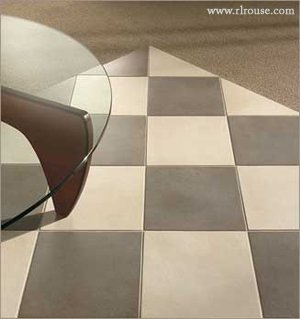 Porcelain tiles are extremely versatile and can be used for both floors and walls. Porcelain products do not absorb water like other flooring materials, and they are also less susceptible to scrapes and scratches.
Porcelain tiles are extremely versatile and can be used for both floors and walls. Porcelain products do not absorb water like other flooring materials, and they are also less susceptible to scrapes and scratches.
Installing tile is not difficult when you follow the recommended procedures:
1. Remove the old floor in the rooms where you want to lay tile. Replace the sub-flooring if you find abnormalities, or if the sub-floor is no longer solid. If you are tiling a room that has vinyl flooring, you could actually install your new porcelain floor on top of it. Tile glue will have no problem adhering to the vinyl.
2. Run a shop vac over the sub floor. Clean the area thoroughly, leaving no dirt or dust behind. Pay extra attention to corners, edges, and other low traffic areas.
3. Pick a side of the room to start laying the tile. Measure everything twice, and use a diamond saw to cut tiles to fit. Apply a layer of tile adhesive just before laying down your tiles. Never spread out more adhesive than what you can handle in a minute. The glue will dry out if exposed to the air too long.
4. Use spacers between the tiles to keep the distance between them uniform.
5. The floor should be dry after 24 hours. Apply a thin layer of grout between the tiles. The grout seals the tiles together and prevents them from being damaged. Select a grout color that closely matches your tiles (and the interior decor).
6. Sweep the tiles to remove excess grout. Wash your new porcelain tile floors with a wet mop to keep them clean.
About the author: My Tile and Bath provides an exceptional collection of discount porcelain tile, the latest in high quality European tile and bath products and accessories at discount prices, while striving to be the best in customer service.